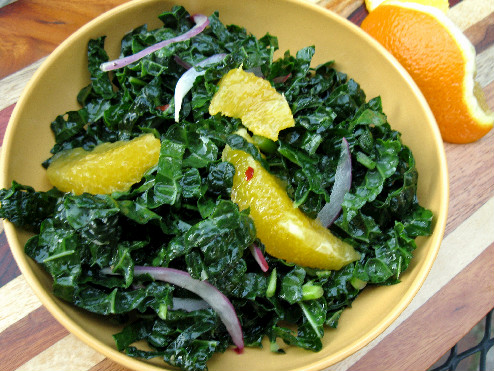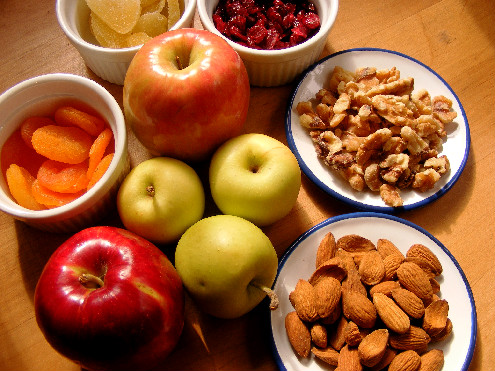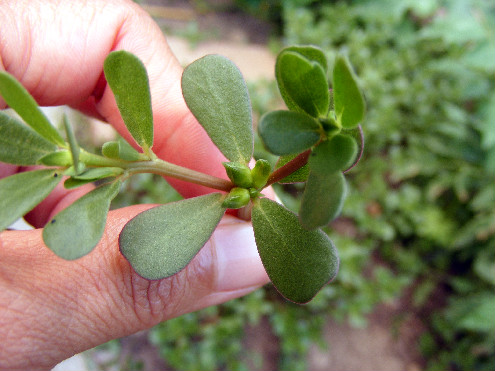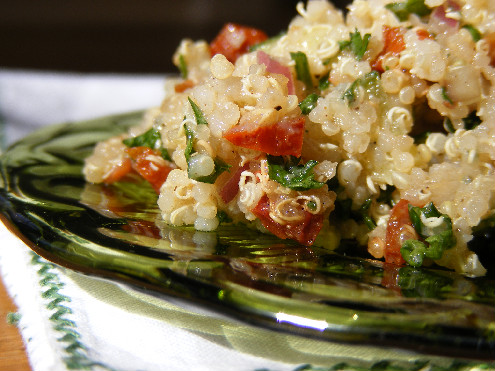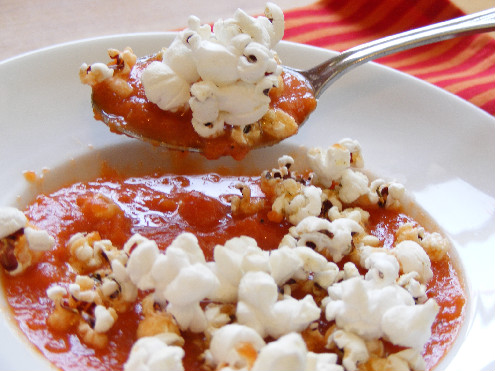Brazilian Orange Raw Kale Salad
Friday, July 22nd, 2011The first time I ate feijoada, it was served with an excellent collard green salad. It was the perfect compliment to the rich and thick black bean stew.
After doing a little research, I learned kale is also used to make Brazilian greens. Since I grow kale in my garden and I know that many of you are looking for additional ways to use this healthy leafy green (kale is a rich source of vitamins and minerals and is touted by health advocates as having anti-inflamatory benefits), I created this super easy Brazilian kale salad with oranges.
Kale was introduced to Brazil during Portuguese colonization along with other food stuff like: figs, citrus fruits, coconuts, rice, watermelon, Guinea pumpkin, mustard, cabbage, lettuce, coriander, cucumbers, watercress, eggplant, carrots, according to the Encyclopedia of Food and Culture.
Since Brazilian greens and feijoada are served with orange wedges, it was obvious to me to combine the greens and oranges into a more-modern version.
Nearly all the recipes for Brazilian green salad that I could find in cookbooks and online called for cooking the kale or collards – either boiling, blanching, or sautéing them. In our house we prefer to eat our kale raw, so this salad is one of the raw kale versions in our rotation. If you haven’t eaten raw kale, don’t be alarmed. The citrus in the dressing tenderizes the greens and also removes the bitterness – much like the ever-popular lemon-parmesean-based one that populates the internet. If you like or if you’re greens are super bitter, give them a quick saute before adding them to the salad.
You could also use collards or swiss chard as a substitute. As far as all things kale, I prefer the lacinato variety over others. Lacinato kale can also be found under the names cavolo nero, black cabbage, Tuscan cabbage, Tuscan kale, and dinosaur kale.
Whether you make feijoada or not, you’ll want to try this salad. By the way, it’s one of those salads that’s better the next day or two after the flavors have melded and the greens have fully softened.
Best Latina Food Blog – Please Vote
I’m one of the finalists up for Best Latina Food Blog sponsored by Blogs By Latinas. I appreciate every single vote of support nominating Fork Fingers Chopsticks to get me this far. Would you vote for FFC in the final round?
- Vote at Blogs by Latinas before midnight Tuesday, July 26, 2011.
- When you go to the site, you’ll need to fill in a vote in the other categories (I’m obviously in the FOOD category)
- To submit, scroll down near the blue “quit” box, then use your right arrow button to find the “finished” button to submit.
For almost two years, this blog has been the space where I combine my creative talents and passion food. Thank you, not only to those who voted or who will vote, but to all of you who follow my kitchen escapades as I explore ingredients and culture.
Happy eating!

